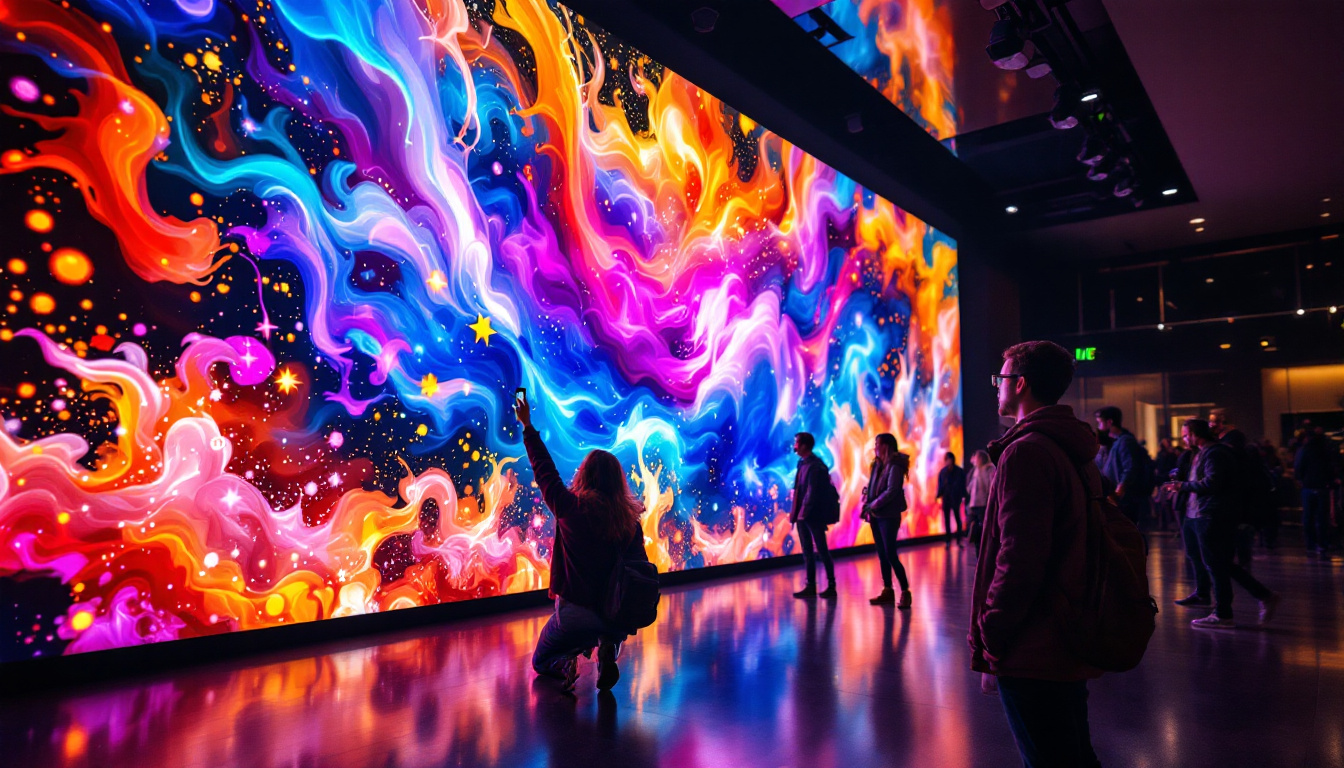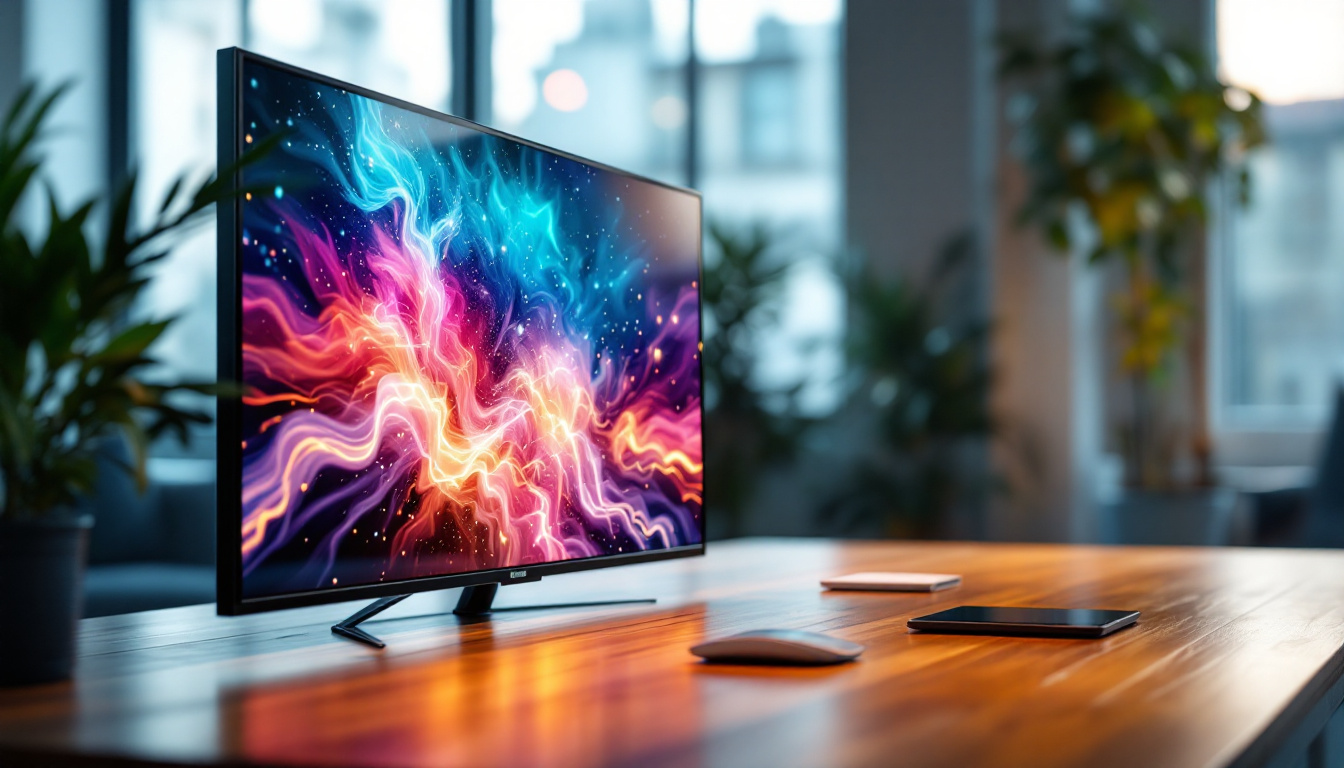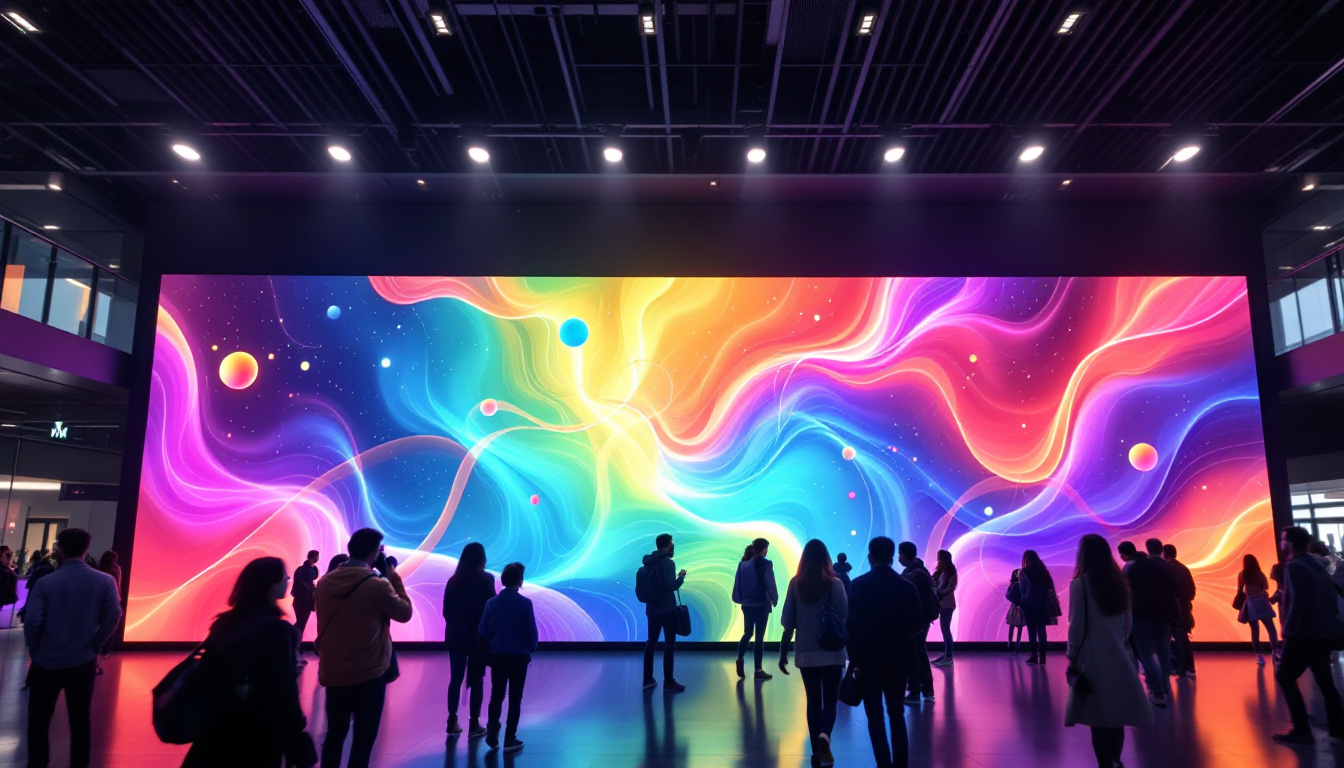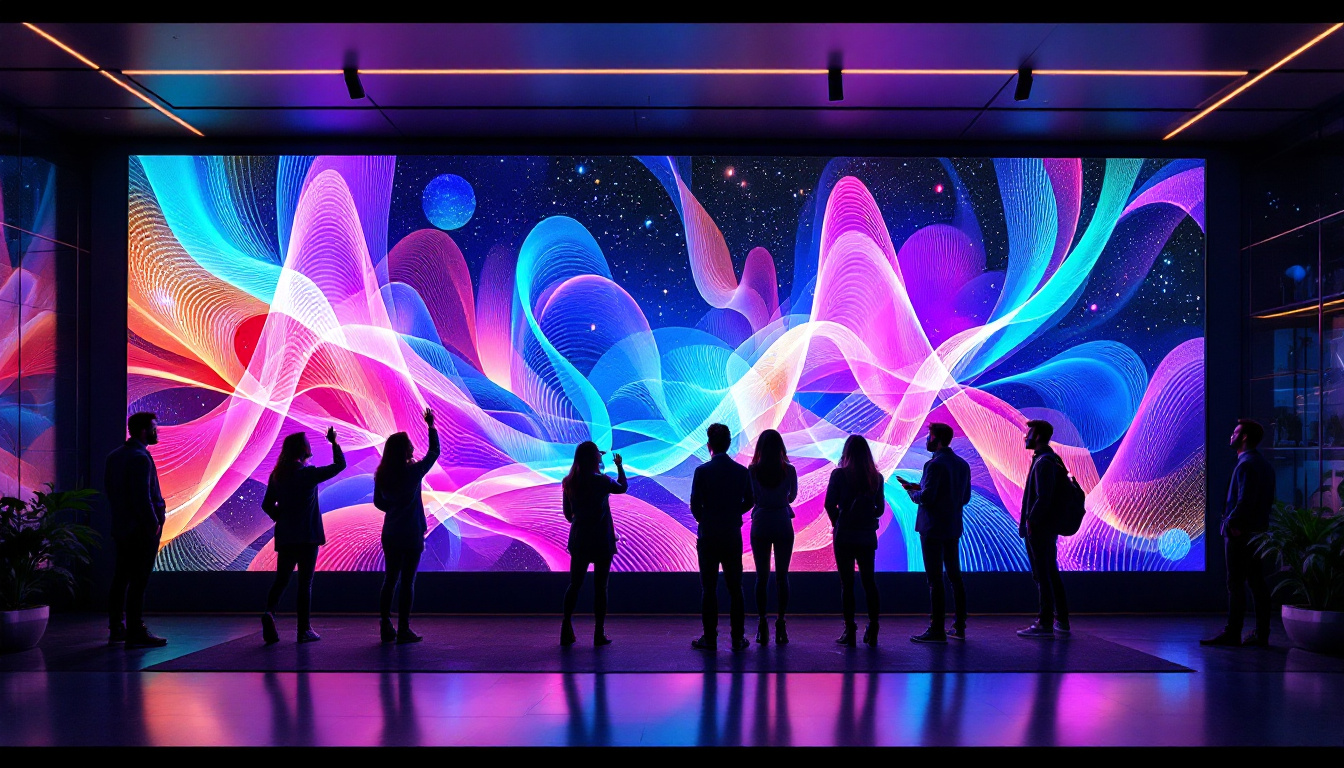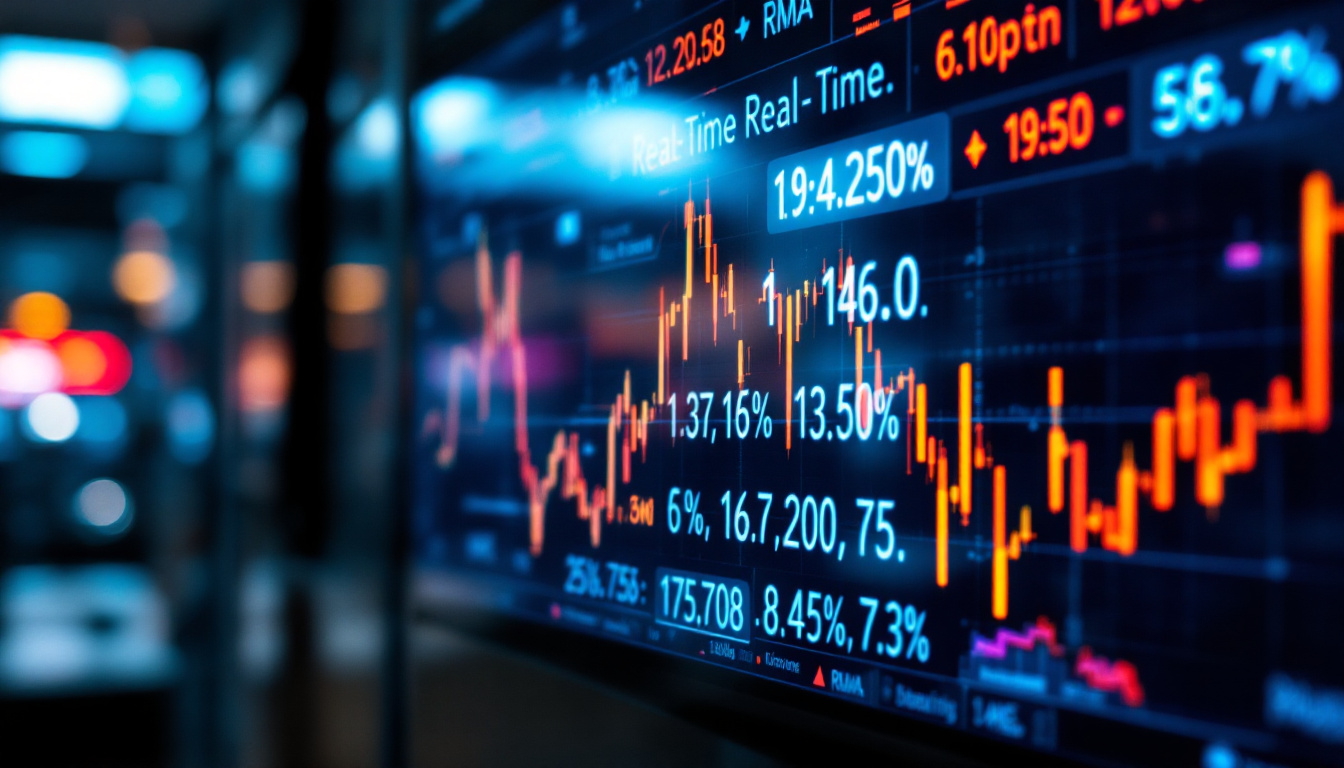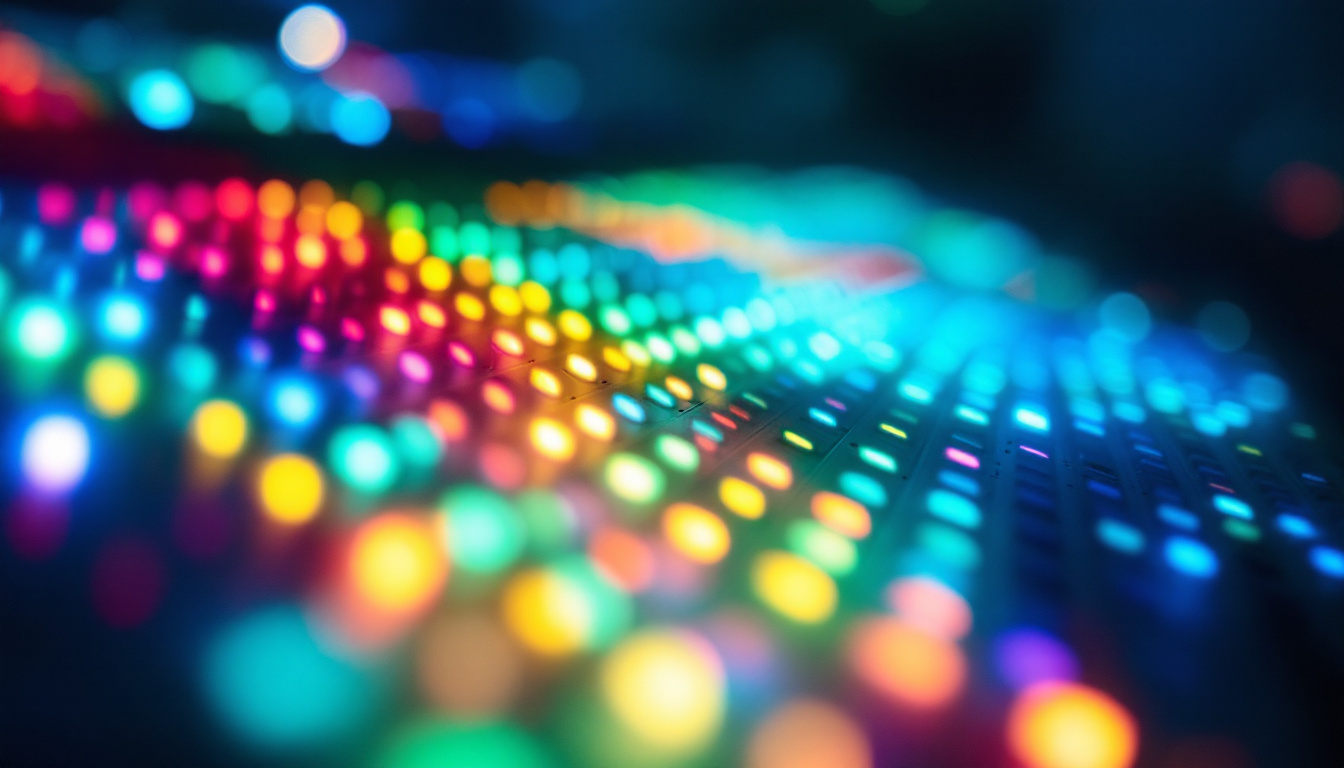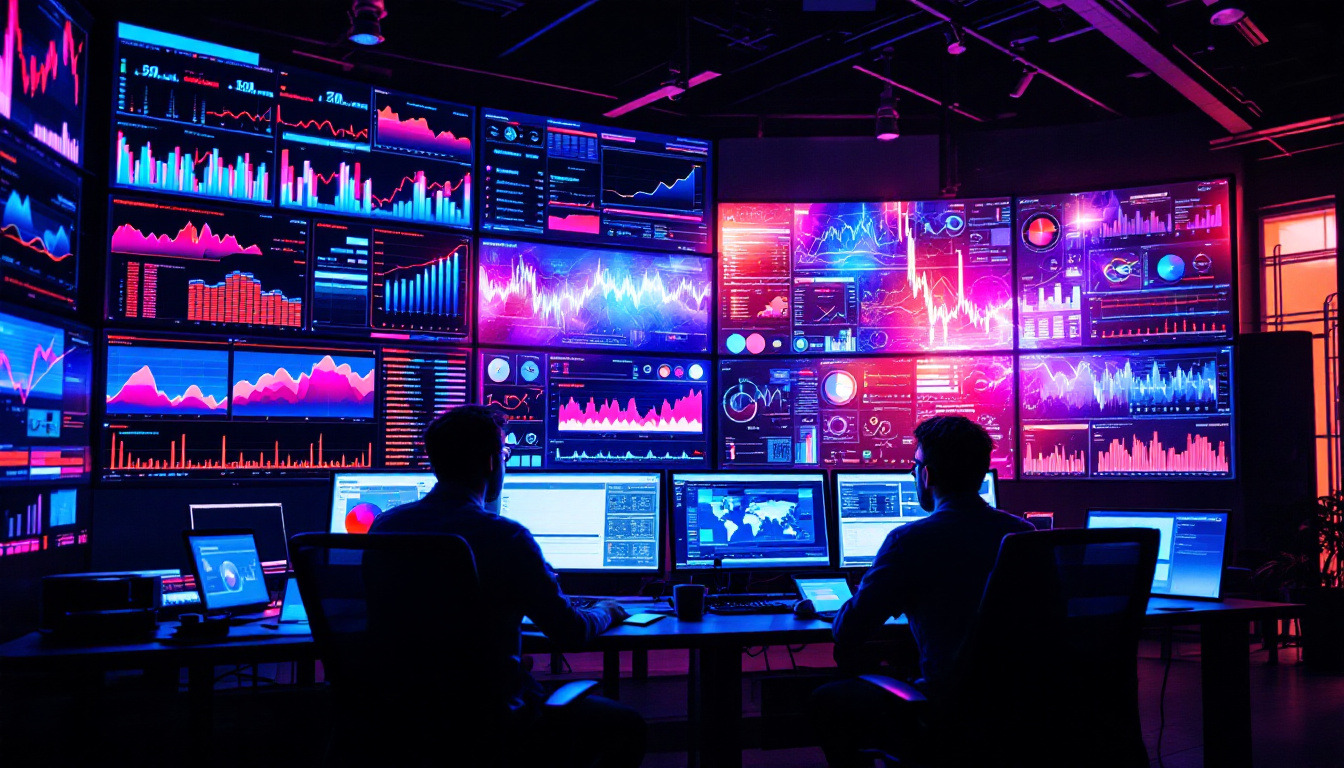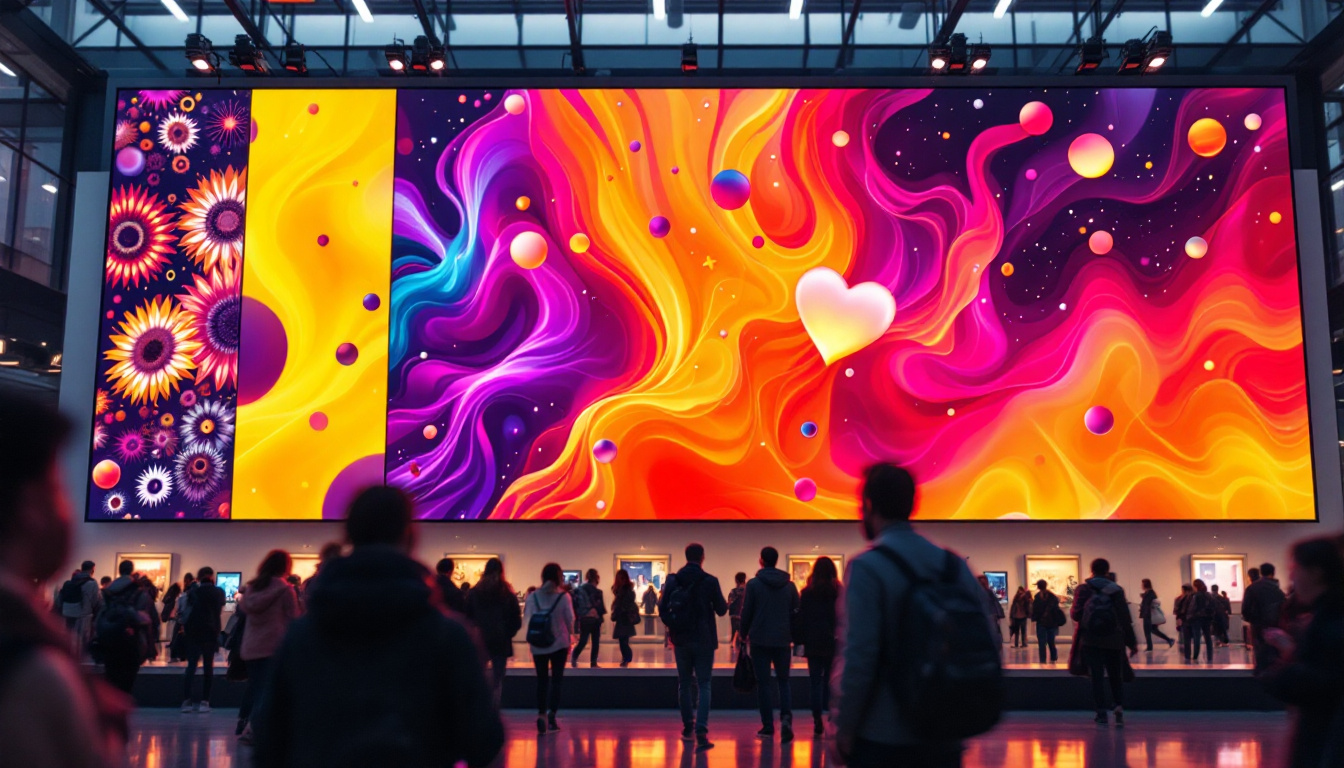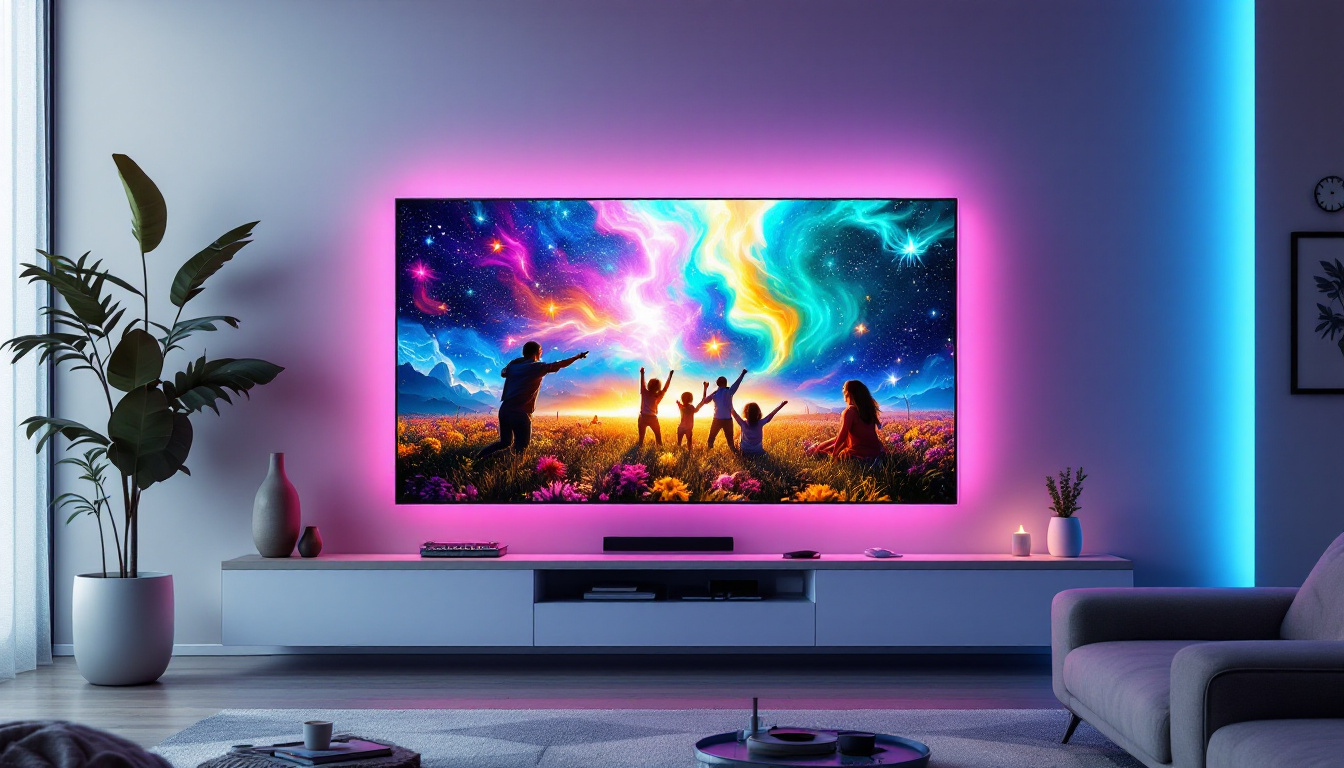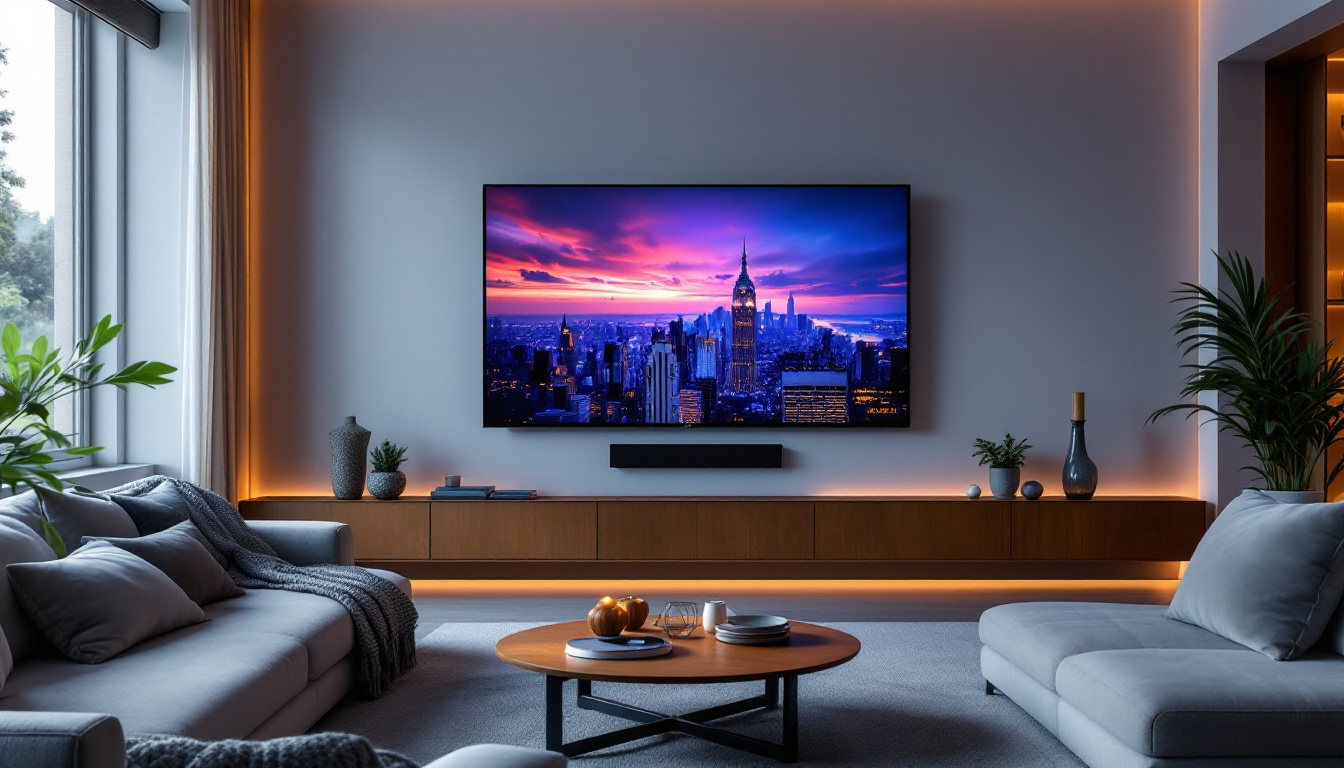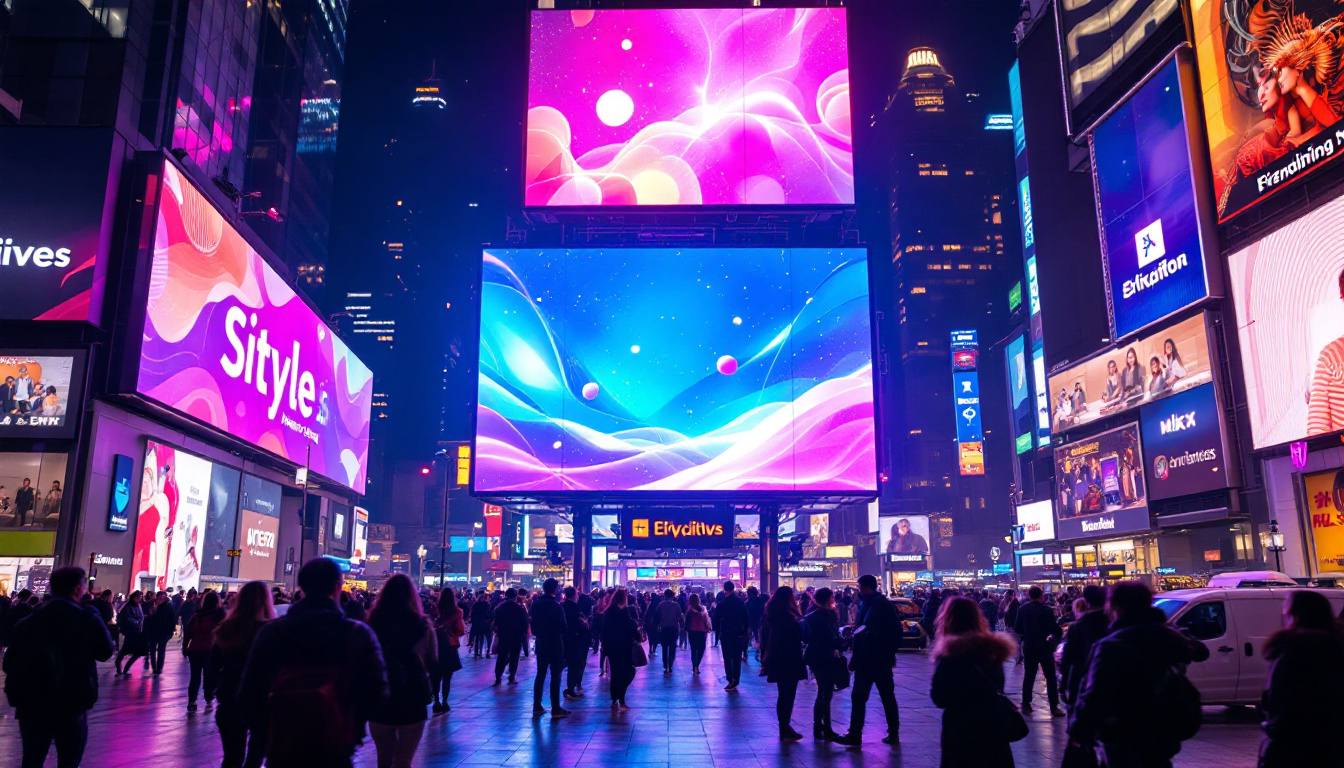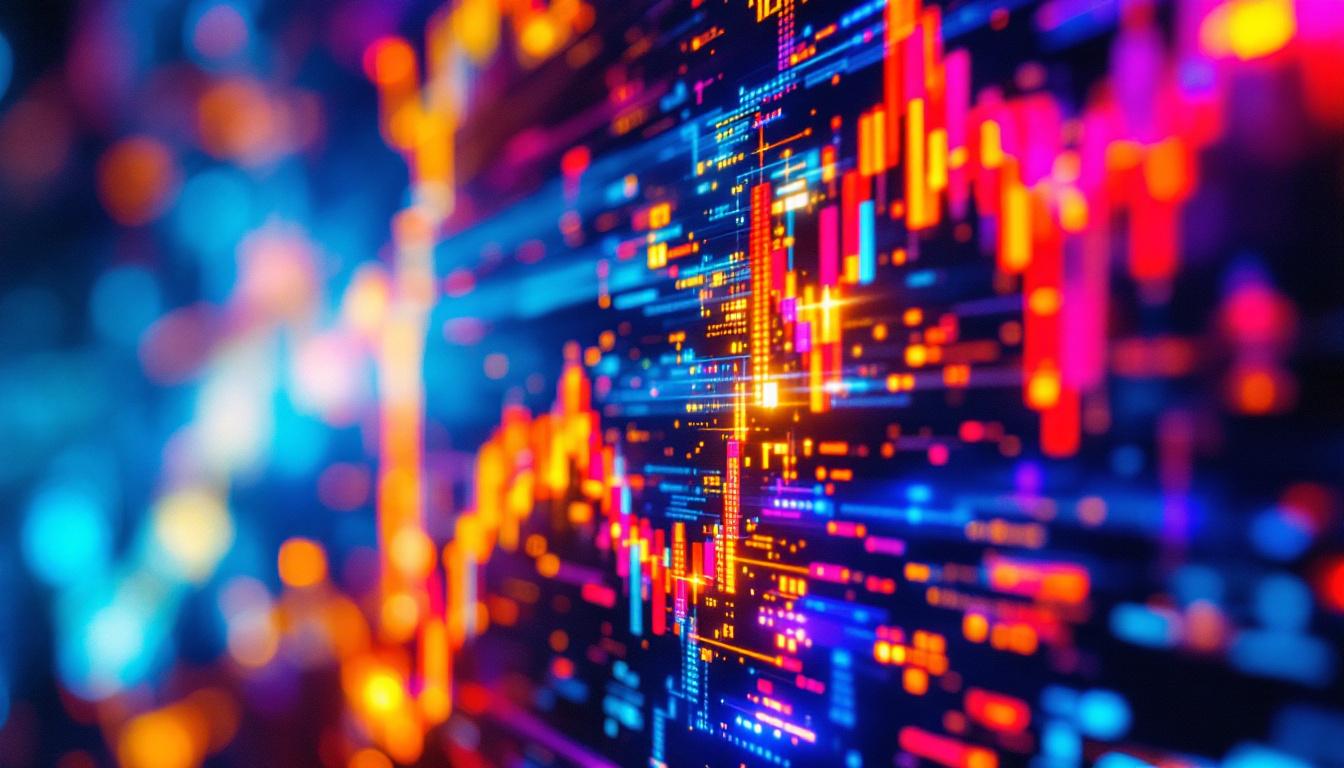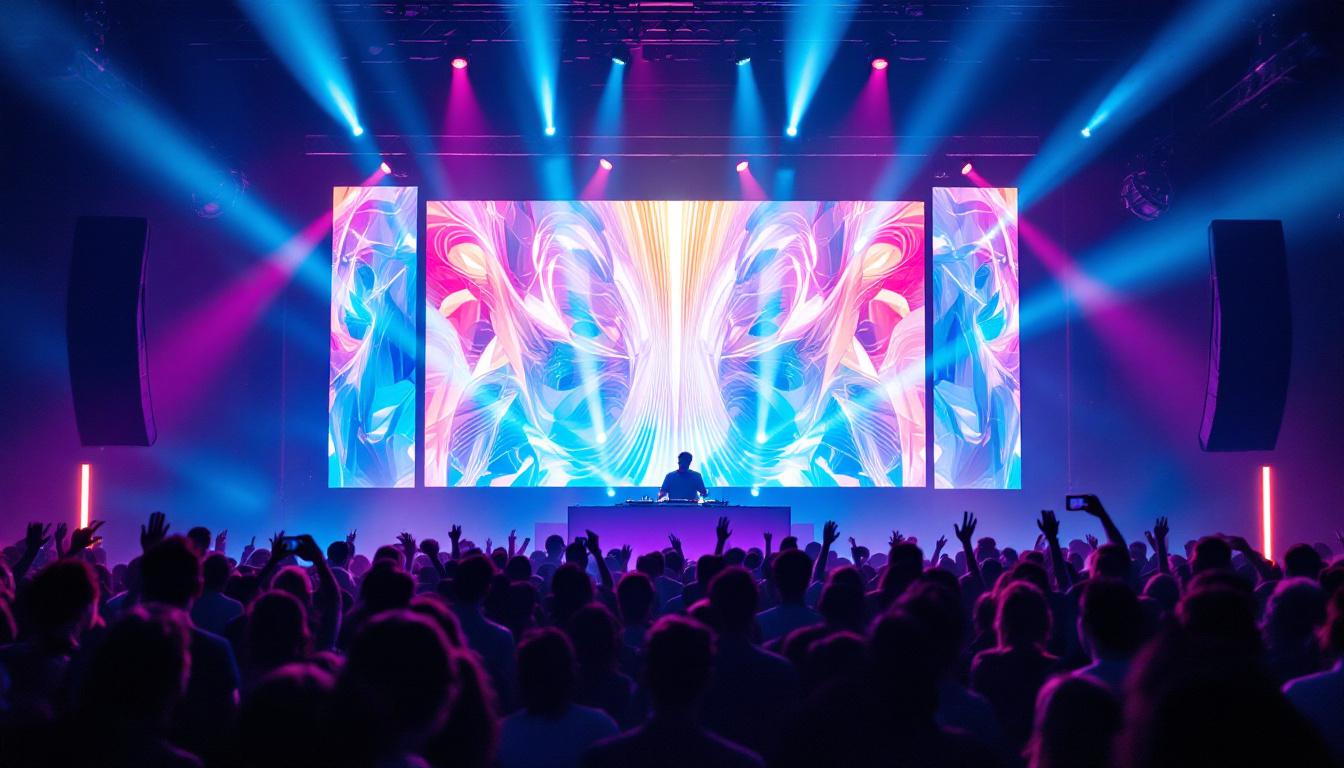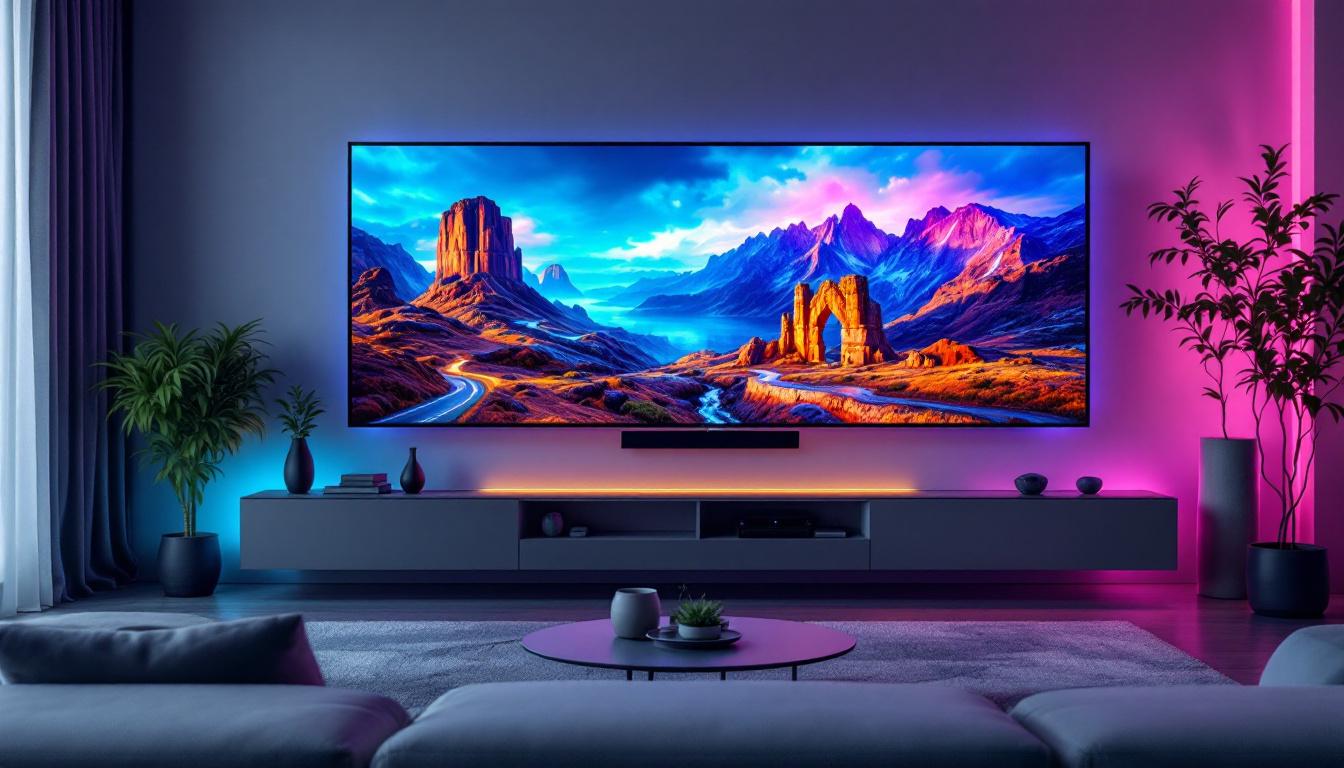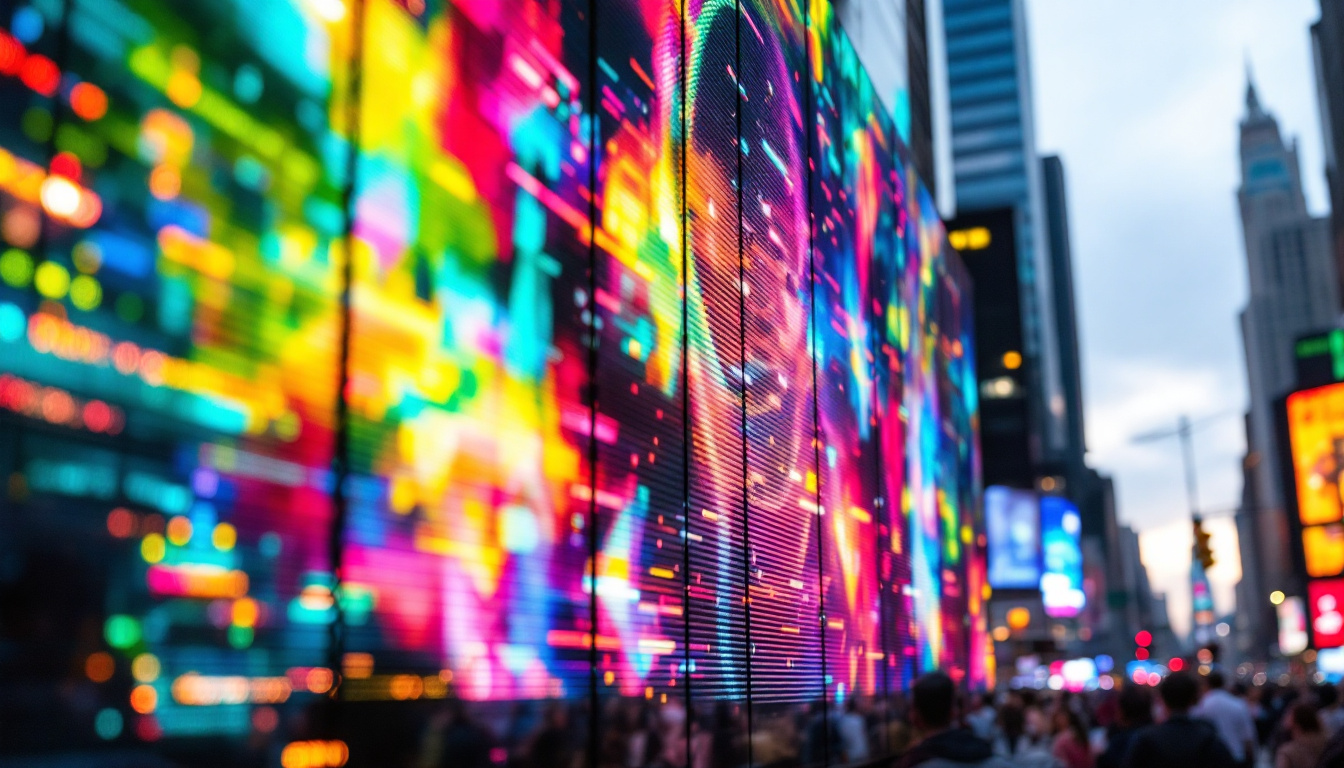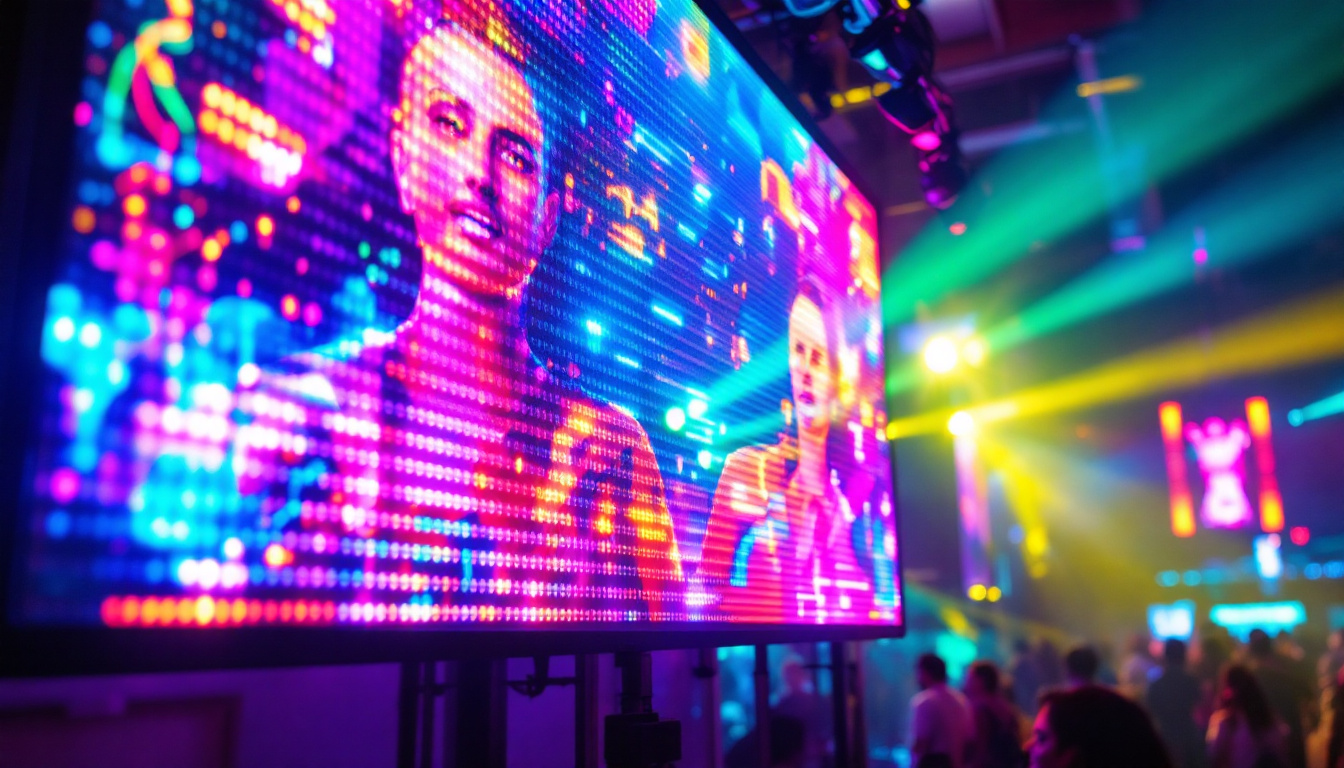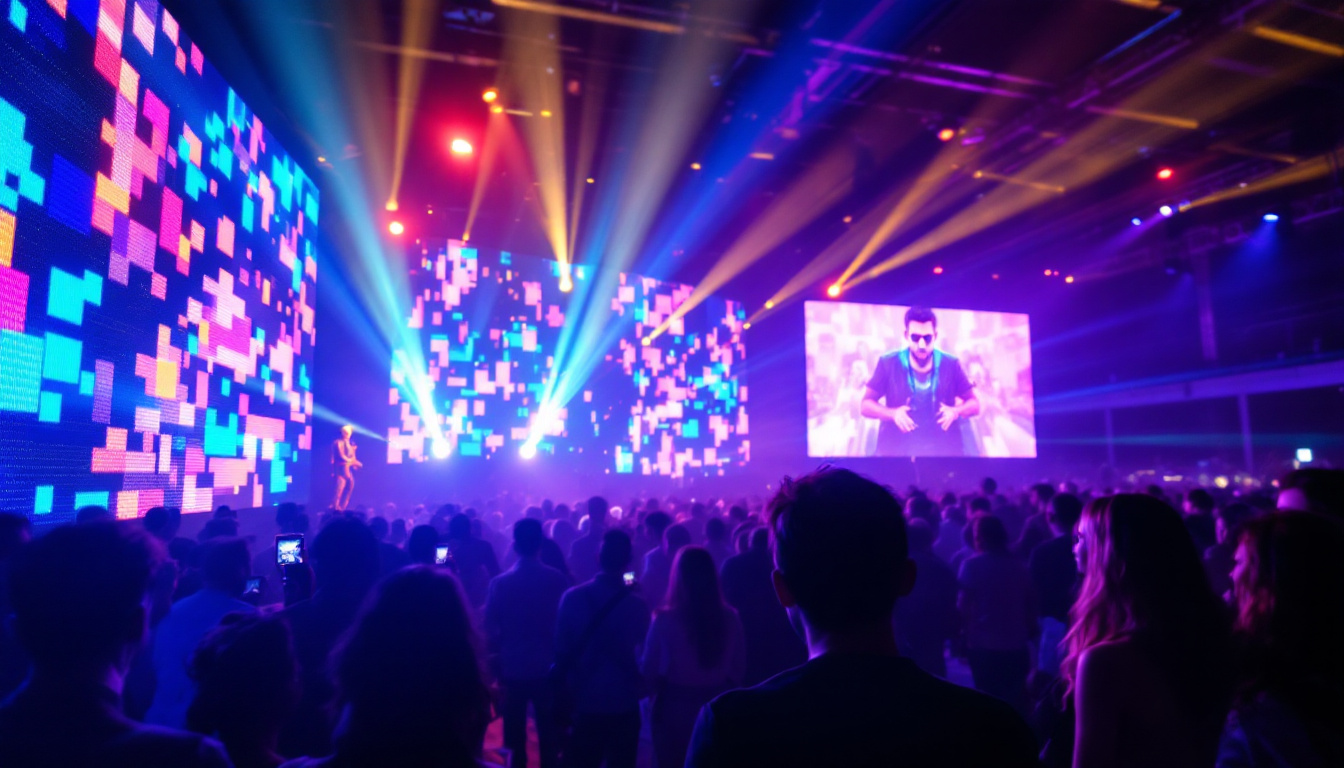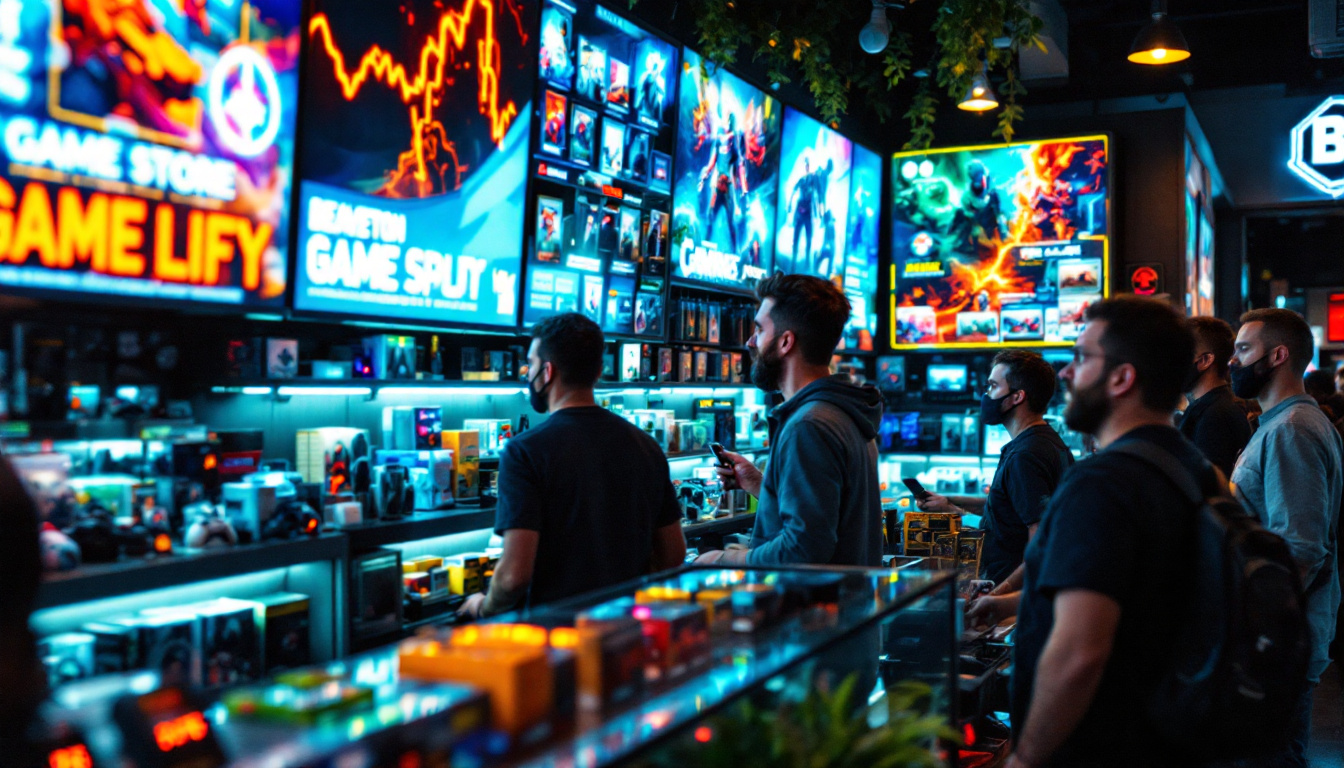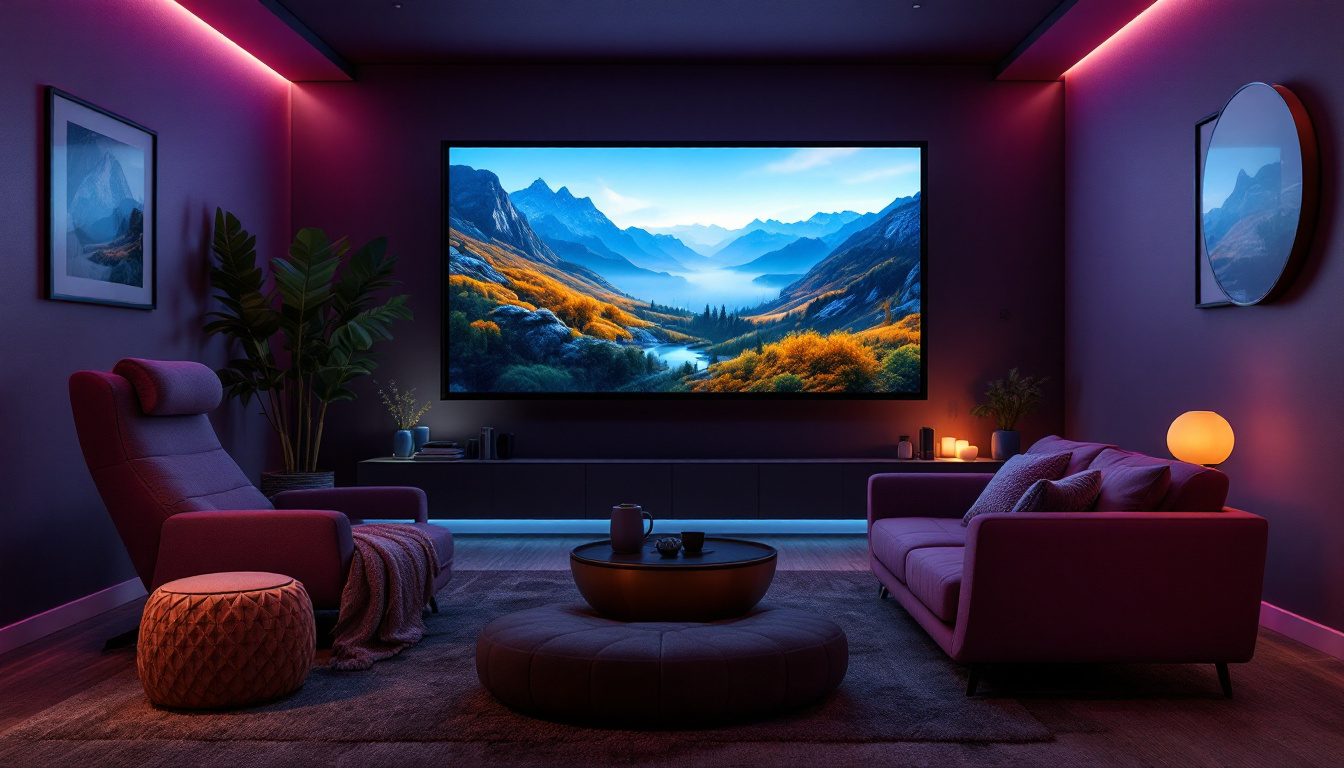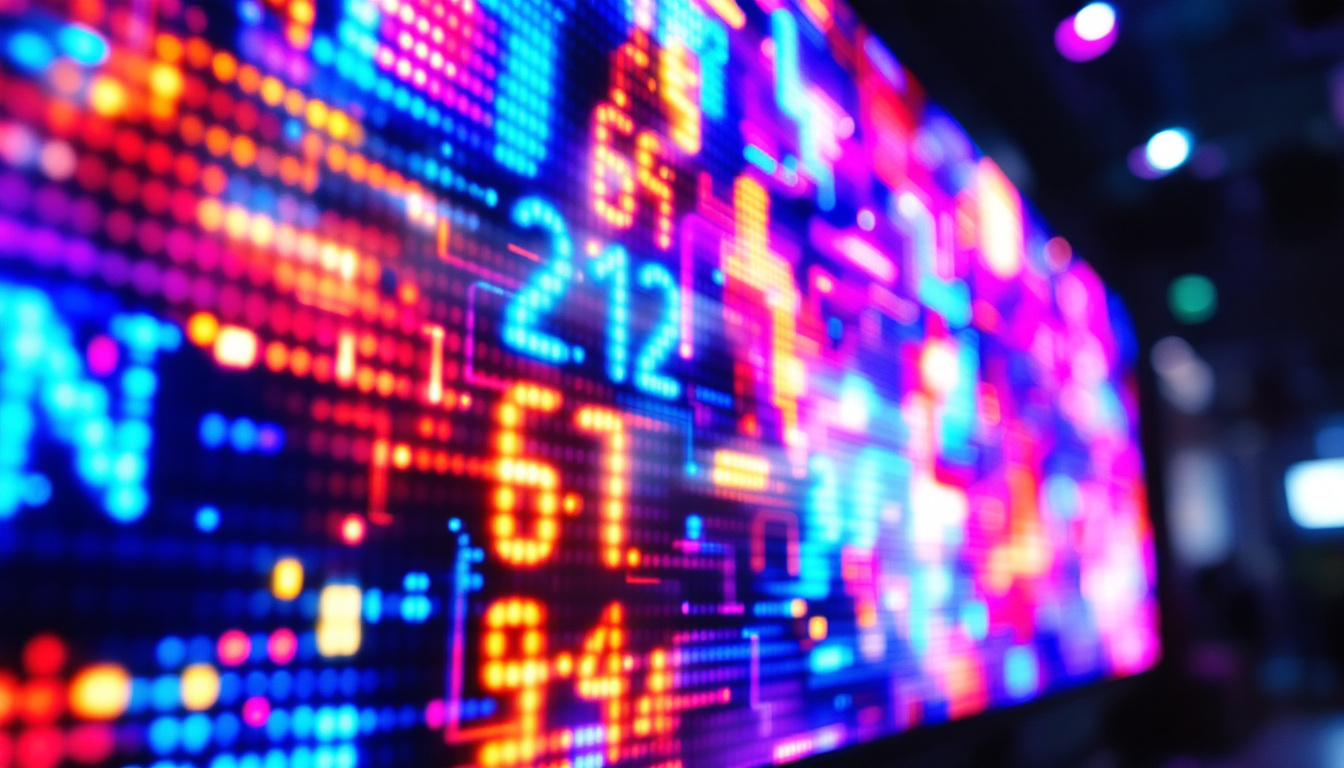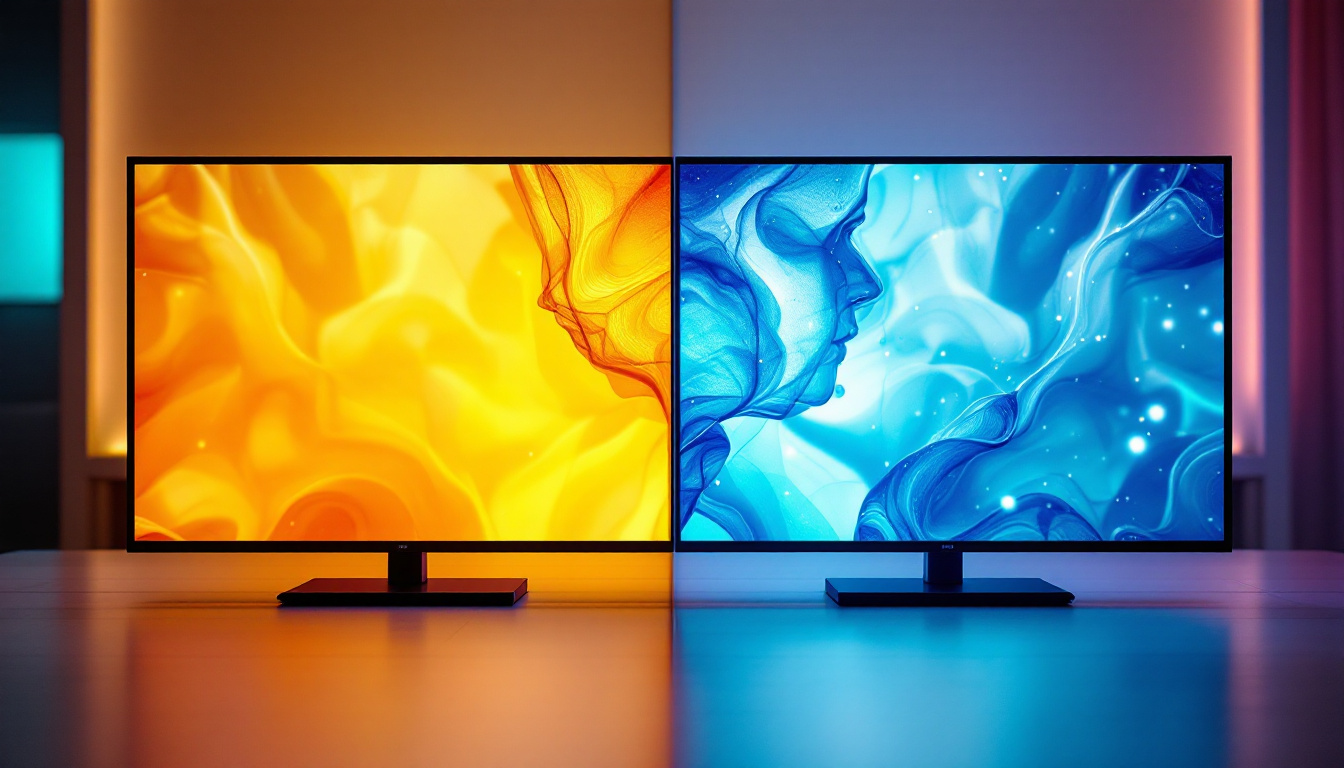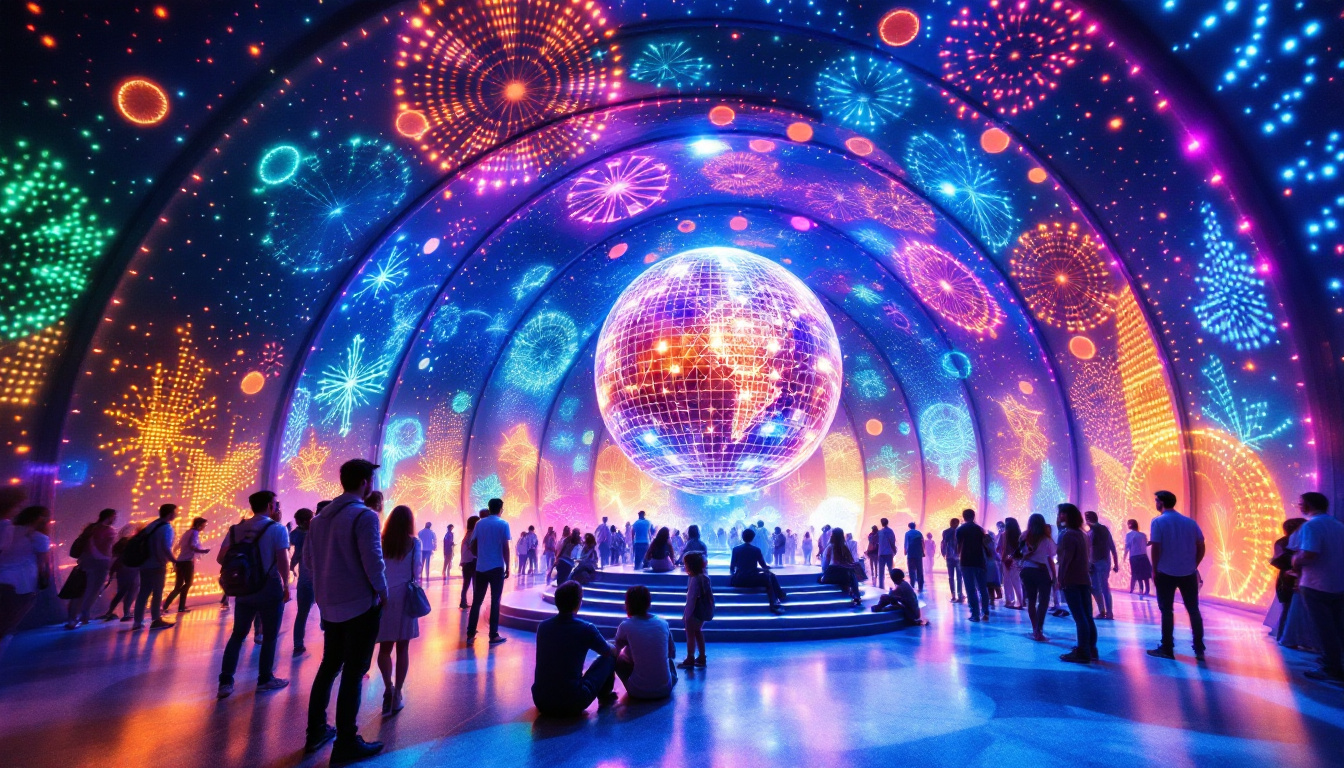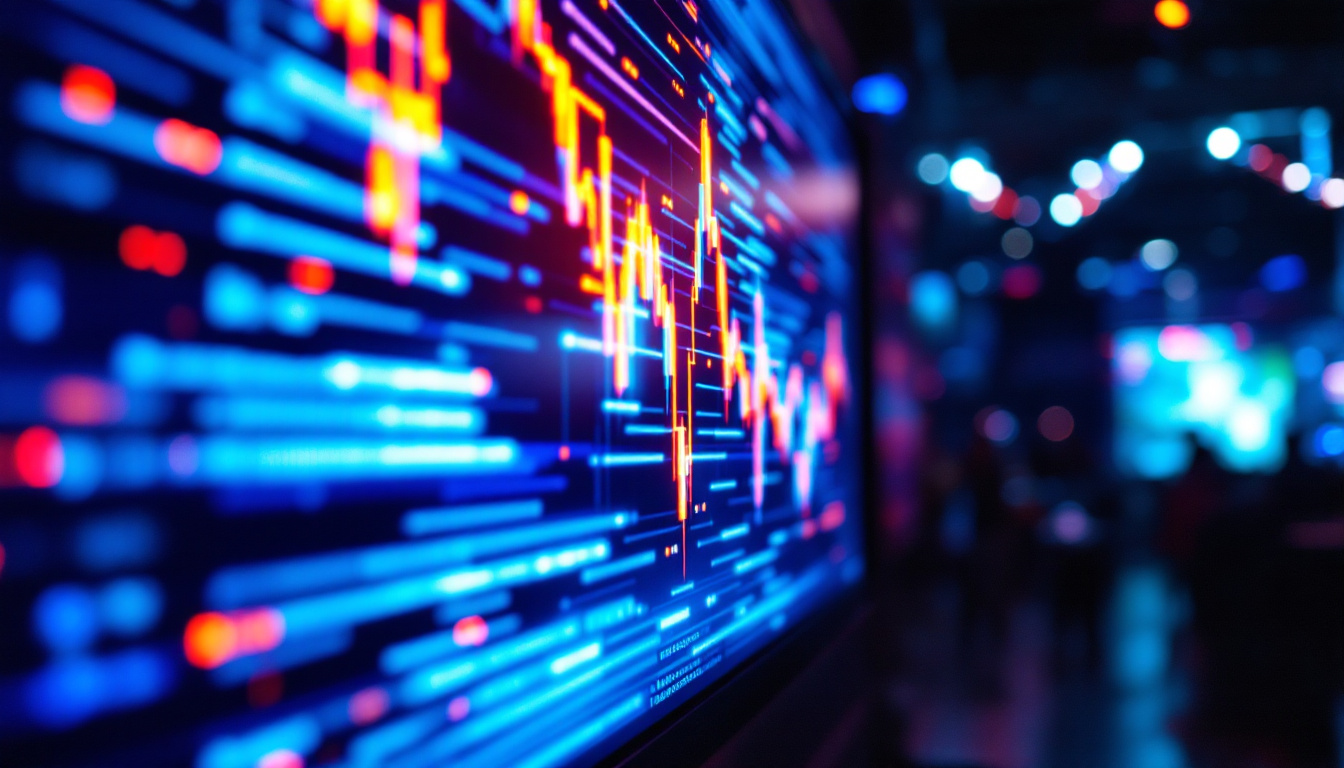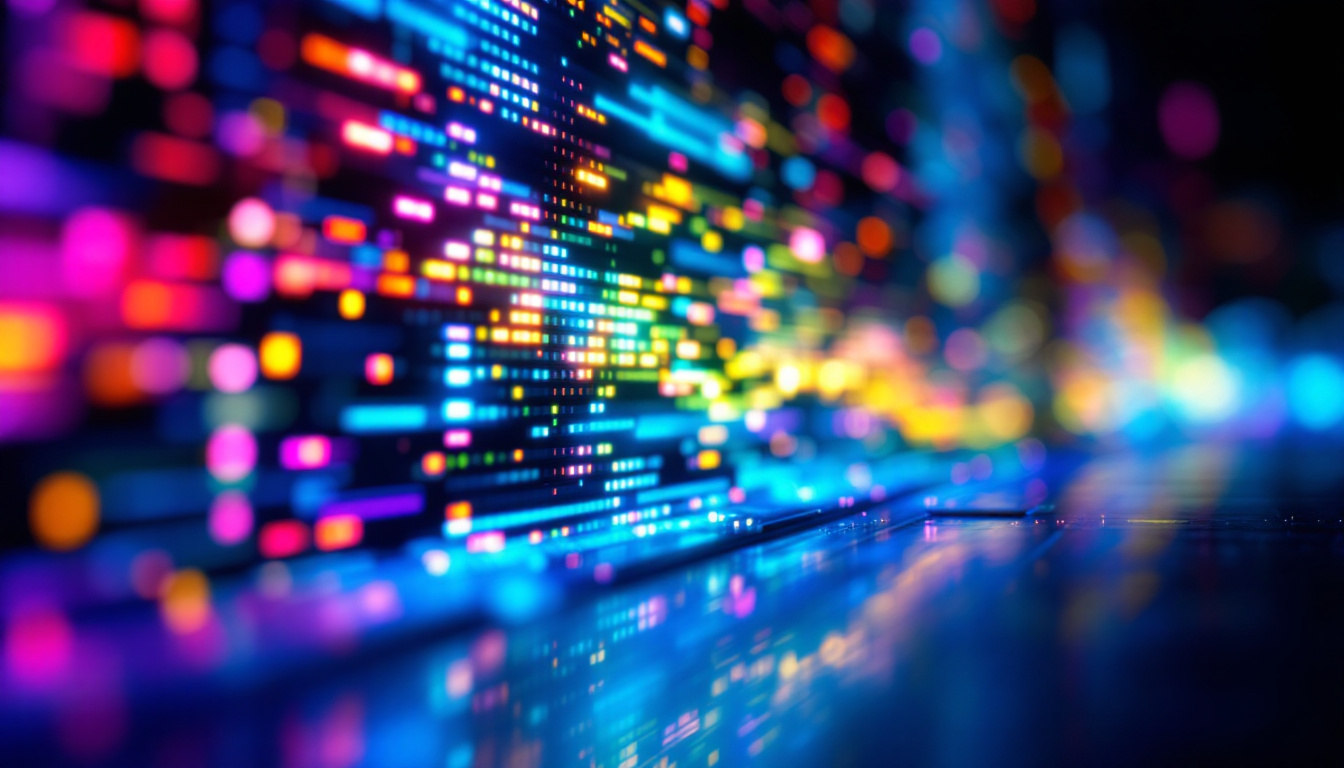A video wall is an innovative display technology that transforms the way information is presented in various environments. Utilizing multiple screens or panels, video walls create a large, cohesive visual experience that can captivate audiences and enhance communication. This article delves into the intricacies of video walls, focusing on LED displays, their applications, benefits, and the technology behind them.
Understanding Video Walls
Video walls are composed of multiple display panels that work together to create a larger image or video. These panels can be made from various technologies, but LED (Light Emitting Diode) displays have become the most popular choice due to their brightness, energy efficiency, and versatility. The seamless integration of these panels allows for a unified image, making video walls ideal for a variety of settings. The ability to customize the size and shape of video walls further enhances their appeal, allowing businesses and organizations to tailor their installations to fit specific environments and aesthetic preferences.
Components of a Video Wall
A typical video wall consists of several key components. The most obvious are the display panels themselves, which can vary in size and resolution. In addition to the panels, video walls require video processors that manage the content being displayed, ensuring that images are correctly scaled and synchronized across all screens. Other essential components include mounting structures, cabling, and control systems that allow users to manage the content remotely. Advanced video walls may also incorporate sensors and software that enable interactivity, allowing viewers to engage with the content in innovative ways, such as touch or gesture control.
Types of Video Wall Technologies
While LED technology is predominant, video walls can also be constructed using other display technologies such as LCD (Liquid Crystal Display) and projection systems. Each type has its unique advantages and disadvantages. For instance, LCD video walls can offer excellent color accuracy and resolution, but they may suffer from bezels that interrupt the visual flow. On the other hand, projection systems can create large images but may not be as bright or vivid as LED displays. Additionally, emerging technologies like OLED (Organic Light Emitting Diode) are gaining traction due to their ability to produce deeper blacks and more vibrant colors, further expanding the possibilities for video wall applications.
Applications of Video Walls
Video walls are utilized across various industries, including retail, corporate environments, entertainment, and public spaces. In retail, they serve as eye-catching displays that can showcase products and promotions. In corporate settings, video walls facilitate presentations and enhance collaboration during meetings. Entertainment venues use video walls to create immersive experiences, while public spaces leverage them for advertising and information dissemination. Beyond these traditional uses, video walls are increasingly being integrated into smart city initiatives, providing real-time updates on traffic, weather, and community events, thereby enhancing urban living and connectivity. Furthermore, in educational institutions, video walls can serve as powerful teaching tools, enabling dynamic presentations that engage students and foster interactive learning environments.
The Advantages of LED Video Walls
LED video walls offer numerous benefits that make them a preferred choice for many applications. Their inherent qualities, such as brightness, color accuracy, and energy efficiency, contribute to their growing popularity. Understanding these advantages can help organizations make informed decisions when considering video wall installations.
Brightness and Visibility
One of the standout features of LED video walls is their exceptional brightness. LED displays can produce vibrant colors and high contrast ratios, making them suitable for use in both indoor and outdoor environments. This brightness ensures that content remains visible even in well-lit settings, providing a clear and engaging viewing experience for audiences. Additionally, the advanced technology behind LED displays allows for a wider viewing angle, meaning that viewers can enjoy the same level of clarity and color fidelity from various positions, enhancing the overall experience in crowded spaces or large venues.
Energy Efficiency
LED technology is known for its energy efficiency, which translates to lower operational costs for organizations. Compared to traditional display technologies, LED video walls consume less power while delivering superior performance. This energy efficiency not only reduces electricity bills but also contributes to a more sustainable approach to display technology. Furthermore, the longevity of LED components means that organizations can expect a longer lifespan from their video walls, resulting in fewer replacements and less waste, which is a significant consideration in today’s environmentally conscious market.
Seamless Integration
LED panels can be arranged in various configurations, allowing for seamless integration into different environments. This flexibility means that video walls can be customized to fit specific spaces, whether in a corporate boardroom, a retail store, or an entertainment venue. The ability to create large, uninterrupted images enhances the overall visual impact, making it an attractive option for many applications. Moreover, modern LED video walls can be easily integrated with various content management systems, enabling organizations to display dynamic content that can be updated in real-time. This capability is particularly beneficial for businesses looking to engage customers with timely promotions or event information, ensuring that the content remains fresh and relevant.
Technology Behind LED Video Walls
The technology that powers LED video walls is fascinating and complex. Understanding how these displays work can provide valuable insights into their performance and capabilities. This section explores the fundamental aspects of LED technology, including pixel configuration and color reproduction.
Pixel Configuration
LED video walls are made up of numerous tiny pixels, each composed of red, green, and blue (RGB) diodes. By varying the intensity of these diodes, the display can produce a wide range of colors. The pixel pitch, which refers to the distance between the centers of adjacent pixels, plays a crucial role in determining the resolution and clarity of the image. A smaller pixel pitch results in higher resolution, making it ideal for close-up viewing.
Color Reproduction
Color accuracy is vital for any display technology, and LED video walls excel in this area. The RGB configuration allows for precise color mixing, resulting in vibrant and lifelike images. Additionally, advancements in LED technology have led to improved color consistency across different panels, ensuring that the entire video wall presents a unified visual experience.
Control Systems and Software
To manage the content displayed on a video wall, sophisticated control systems and software are employed. These systems allow users to create, schedule, and display content seamlessly across multiple panels. Advanced software solutions also enable real-time monitoring and adjustments, ensuring optimal performance and reliability.
Installation and Maintenance of LED Video Walls
Installing and maintaining an LED video wall involves careful planning and execution. From selecting the right location to ensuring proper calibration, several factors must be considered to achieve the best results. This section outlines the key steps involved in the installation and ongoing maintenance of LED video walls.
Installation Considerations
When installing an LED video wall, it is essential to assess the location carefully. Factors such as ambient lighting, viewing distance, and available space play a critical role in determining the appropriate configuration and pixel pitch. Additionally, the mounting structure must be robust enough to support the weight of the panels while allowing for easy access for maintenance.
Calibration and Configuration
Once installed, the video wall requires calibration to ensure optimal performance. This process involves adjusting brightness, contrast, and color settings to achieve uniformity across all panels. Proper calibration is crucial for delivering a consistent viewing experience, especially in environments where color accuracy is paramount, such as in retail or corporate presentations.
Ongoing Maintenance
Regular maintenance is vital to keep an LED video wall functioning at its best. This includes routine inspections to check for any dead pixels, cleaning the panels to remove dust and debris, and updating software to ensure compatibility with new content formats. By implementing a proactive maintenance schedule, organizations can extend the lifespan of their video walls and maintain high-quality performance.
Future Trends in Video Wall Technology
The landscape of video wall technology is continually evolving, with new advancements emerging that enhance performance and expand capabilities. As industries increasingly adopt video walls for various applications, staying informed about future trends is essential for organizations looking to invest in this technology.
Advancements in Resolution
As consumer demand for higher resolution content continues to grow, video wall technology is also advancing. The introduction of 4K and even 8K resolution displays is becoming more common, providing unparalleled clarity and detail. These advancements allow for more immersive experiences, particularly in environments such as museums, galleries, and high-end retail spaces.
Integration with Interactive Technologies
Another trend gaining traction is the integration of interactive technologies with video walls. Touch-sensitive screens and gesture recognition systems are being incorporated to create engaging experiences that encourage audience interaction. This interactivity can enhance presentations, marketing campaigns, and educational displays, making video walls even more versatile.
Enhanced Connectivity and Content Management
With the rise of cloud-based solutions and IoT (Internet of Things) technology, video walls are becoming increasingly connected. Enhanced connectivity allows for easier content management, enabling users to update and control displays remotely. This capability streamlines operations and makes it easier to adapt content to changing circumstances or audience needs.
Conclusion
Video walls, particularly those utilizing LED technology, represent a powerful tool for communication and engagement across various sectors. Their ability to deliver vibrant, high-quality visuals in a seamless format makes them an attractive option for businesses and organizations looking to enhance their messaging. As technology continues to advance, the potential applications and capabilities of video walls will only expand, solidifying their place as a vital component in modern visual communication.
Investing in a video wall is not just about enhancing visual appeal; it’s about creating impactful experiences that resonate with audiences. Understanding the technology, benefits, and future trends will empower organizations to make informed decisions and leverage video walls effectively in their strategies.
Discover LumenMatrix’s Innovative LED Solutions
Ready to transform your space with a video wall that embodies innovation and visual excellence? Look no further than LumenMatrix, a pioneer in LED display technology. Our diverse range of solutions, from Indoor and Outdoor LED Wall Displays to specialized options like Vehicle, Sports, and Floor LED Displays, are designed to captivate and engage your audience. Embrace the future of visual communication with our Custom, All-in-One, and Transparent LED Displays. Experience the difference and check out LumenMatrix LED Display Solutions today to elevate your brand’s visibility and create unforgettable visual experiences.

